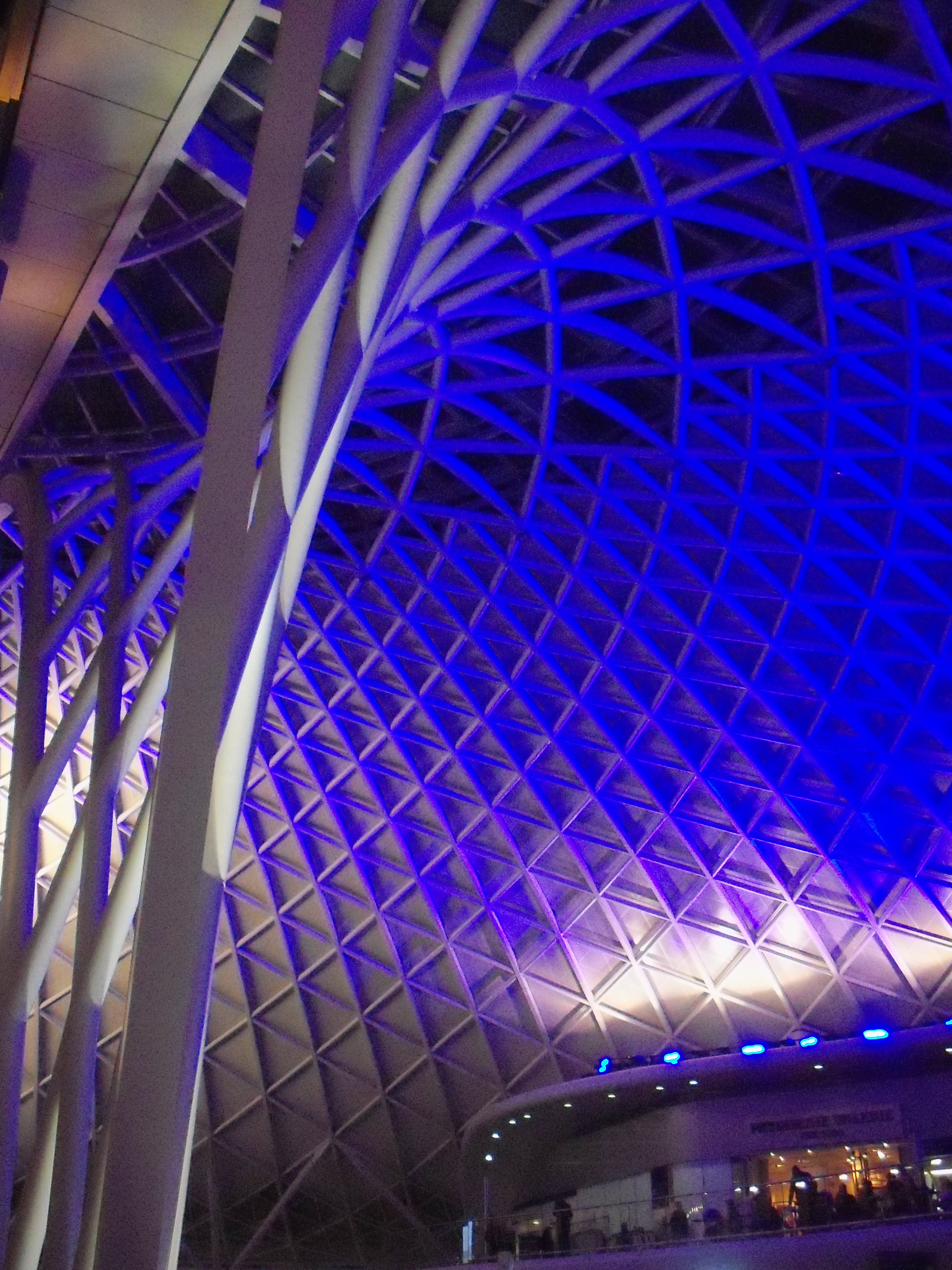Roof structure

|
| The roof structure at King's Cross Station, London |
‘Roof structure’ is a term that refers to the construction at the top of a building which typically provides protection from the elements. It generally comprises a system of structural members designed to support the roof build-up – i.e the materials that provide watertightness and thermal and acoustic insulation to the building below.
The term roof structure tends to be associated with pitched or Mansard roofs, and special types of roof such as those made of space frames, trusses, barrel vaults and other structural forms. This sort of roof structure (apart from space frames) will often create a roof space that can be used for various functions, including for living accommodation, storage, office space, plant and other uses. Roof spaces so formed are frequently called lofts or attics.
A roof structure (sometimes simply called the ‘roof) will often fulfil the functions of:
- Weather resistance.
- Strength and stability.
- Fire resistance.
- Thermal insulation.
- Acoustic insulation.
- Security.
- Privacy.
From a construction point of view, a traditional roof structure can be conceived of as a separate entity to the structure below it. For example, in a house of masonry construction, the roof structure is often a ‘bolt-on’ framework comprising timber purlins and rafters fixed to wall plates which in turn are tied down to the masonry walls. This timber framework not only supports the roof build-up (insulation, coverings etc) but also creates a roof space that can be used for habitation. The roof structure also forms an aesthetic element in its own right.
In normal framed applications, the system of steel or concrete beams is terminated on the underside of the roof build up. There is no separate roof structure as such, only the framing of the top floor beams and columns (supporting the roof build-up) which is considered part of the building’s superstructure. If, however, a Mansard or pitched roof is added, a system of steel (or timber) members will be used to create the roof structure and with it a new roof space that may have various uses.
Framed buildings may have a variety of construction systems added to the top. In these cases, the roof structure may be formed of a series of trusses, a space frame, barrel vaults, braced domes, folded slabs, north lights and tension structures, to name a few. However, most commercial multi-storey buildings have a roof slab that simply supports the roof build-up which provides protection from the weather.
The roof structure may also support walkways and other access equipment, building services plant, planting, water features, lighting, water storage and so on.
Buildings such as concert halls in noisy localities may require special consideration to be given to the design of the roof, with weight and discontinuity of structure necessary to achieve the suitable acoustics. This can make the roof structure design complex and expensive.
Likewise, resistance to the spread of fire will depend on proximity to other buildings, the nature of the building in question and the roof structure itself. Fire protection must prevent the passage of fire from adjacent roofs, while the roof structure must prevent fire spread from its roof space into other parts of the building. Considerations such as these can make the design of roof structures very complicated.
For more information see: Types of roof.
[edit] Related articles on Designing Buildings Wiki
Featured articles and news
The UK's Modern Industrial Strategy: A 10 year plan
Previous consultation criticism, current key elements and general support with some persisting reservations.
Building Safety Regulator reforms
New roles, new staff and a new fast track service pave the way for a single construction regulator.
Architectural Technologist CPDs and Communications
CIAT CPD… and how you can do it!
Cooling centres and cool spaces
Managing extreme heat in cities by directing the public to places for heat stress relief and water sources.
Winter gardens: A brief history and warm variations
Extending the season with glass in different forms and terms.
Restoring Great Yarmouth's Winter Gardens
Transforming one of the least sustainable constructions imaginable.
Construction Skills Mission Board launch sector drive
Newly formed government and industry collaboration set strategy for recruiting an additional 100,000 construction workers a year.
New Architects Code comes into effect in September 2025
ARB Architects Code of Conduct and Practice available with ongoing consultation regarding guidance.
Welsh Skills Body (Medr) launches ambitious plan
The new skills body brings together funding and regulation of tertiary education and research for the devolved nation.
Paul Gandy FCIOB announced as next CIOB President
Former Tilbury Douglas CEO takes helm.
UK Infrastructure: A 10 Year Strategy. In brief with reactions
With the National Infrastructure and Service Transformation Authority (NISTA).
Ebenezer Howard: inventor of the garden city. Book review.
The Grenfell Tower fire, eight years on
A time to pause and reflect as Dubai tower block fire reported just before anniversary.
Airtightness Topic Guide BSRIA TG 27/2025
Explaining the basics of airtightness, what it is, why it's important, when it's required and how it's carried out.
Construction contract awards hit lowest point of 2025
Plummeting for second consecutive month, intensifying concerns for housing and infrastructure goals.
Understanding Mental Health in the Built Environment 2025
Examining the state of mental health in construction, shedding light on levels of stress, anxiety and depression.
The benefits of engaging with insulation manufacturers
When considering ground floor constructions.
Lighting Industry endorses Blueprint for Electrification
The Lighting Industry Association fully supports the ECA Blueprint as a timely, urgent call to action.























